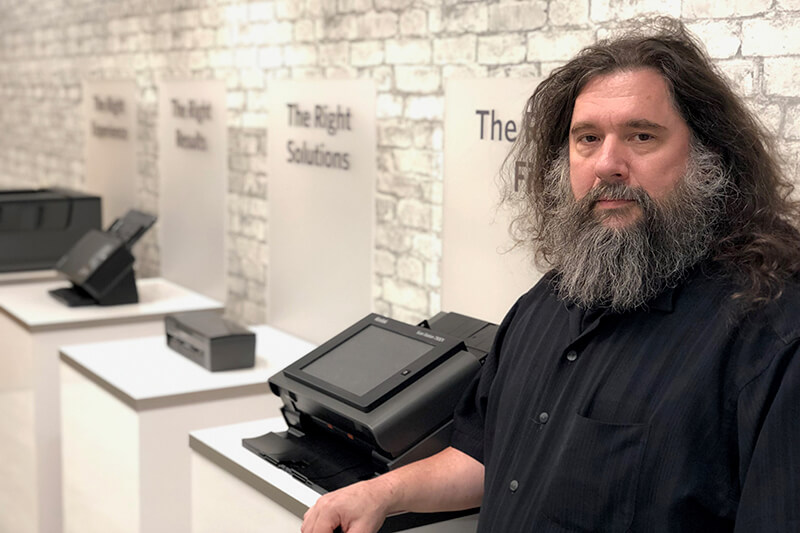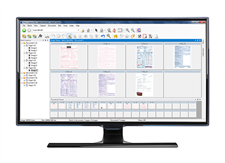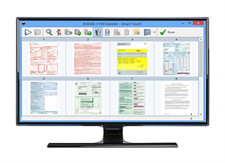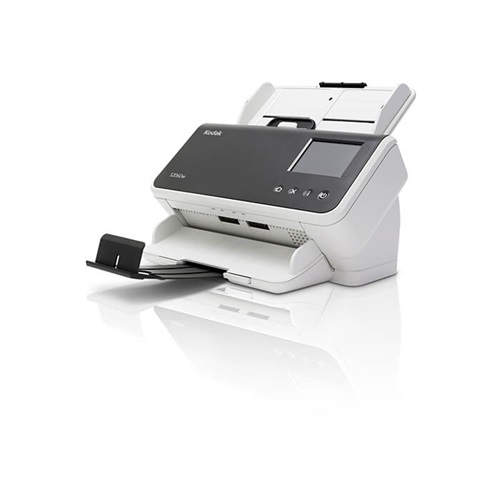TWAIN driver document scanner capture must have
The TWAIN driver runs between an application and the scanner hardware and usually comes as part of the software package included with a scanner. In a nutshell, TWAIN allows users to scan an image (document) directly into an application where they want to work with it. Without TWAIN, users would have to close an open application, open a special one to receive the image, and then move the image to the original application to work with it – a lot of extra steps. This, therefore, allows organizations to drive their transformation efforts forward, knowing that solutions from TWAIN members, such as Alaris, will deliver on a promise of compatibility and longevity.
With TWAIN, end customers get better value and enjoy a better experience, while integrators also benefit through features such as TWAIN’s self-certification. The TWAIN self-certification system helps developers validate their data source’s support of the basic interface described by the TWAIN Specification. Passing the test confirms that the data source’s interface works as expected with applications, responds correctly to commands sent by an application, and that it does not crash or hang - leading to a better user experience.
Purchasers should look for products that offer TWAIN compatibility.
For end-users looking to maximize the flexibility of their scanning and document management solutions, TWAIN is table stakes. The healthcare sector is a good example – hospitals, clinics and medical offices require error-free scanning. It’s critical and a regulatory requirement. Reliable, hassle-free, TWAIN-compliant medical scanning software that can scan straight from end-user scanners into any electronic medical record (EMR), electronic health record (EHR) or custom document management system is required.
Interoperable Standards
The TWAIN initiative was first launched in 1992 by leading industry vendors who recognized the need for a standard software protocol and applications programming interface (API) that regulates communication between software applications and imaging devices (the source of the data). The TWAIN Working Group defines that standard.
Alaris, a Kodak Alaris business, is a founding member of the TWAIN Working Group, whose purpose is to develop and maintain a universal public standard, which links applications and image acquisition devices. The ongoing mission of this organization is to continue to enhance the standard to accommodate future technologies.
Mark McLaughlin, a Senior Software Engineer at Alaris, joined the initiative in 1997 and has been instrumental in establishing the TWAIN standard; he currently serves on the Group's Executive Committee as Technical Committee Chair. Mark argues that TWAIN is the most successful image capture API in the market, reaching countless applications.
He said: “Its design empowers applications to dynamically discover a scanner's features and to do it in such a way that all versions of the standard are interoperable. Modern TWAIN applications can still run drivers created back in the 1990s. That durability and consistency makes TWAIN a good choice for future-proof adoption.”

Living Standard
TWAIN is very much a living standard and new functions are always in the pipeline. As one example, the decline in usage of laptop and desktop PCs due to the trend of communication directly from a software application to a device, such as a document scanner, is one of the main reasons that the TWAIN Working Group has been working hard on developing the modern specification of TWAIN drivers with TWAIN Direct. With TWAIN Direct, the driver is embedded on the scanner itself which reduces costs and complexity.
According to McLaughlin, TWAIN Direct provides an important alternative for customers who need the flexibility of an open source standard that's not bound to a proprietary API or any given cloud ecosystem. “None of this sacrifices value-add, both vendors and end-users are free to customize their experience. But the core foundation of TWAIN Direct is a common, interoperable standard,” he explained.
The TWAIN Working Group has also addressed the problem of who goes first when it comes to developing products, the application developers or scanner vendors. The TWAIN Bridge lets users experience TWAIN Direct today using legacy TWAIN scanners, while scanner vendors develop the firmware for true native TWAIN Direct scanners.
Confidence
TWAIN ensures compliance. For example, if an end customer requests a change, TWAIN makes it simple to alter solutions. It’s worth pointing out here that Alaris has the only fully functional TWAIN driver that offers full support for LINUX. All the while, other manufacturers use SANE, which has inferior functionality and does not natively support compression.
So, next time you’re looking for a document capture solution, ensure it meets TWAIN standards - with efficiency, effectiveness, interoperability and integration as standard, it’s an organizational essential.
Einblicke und Fallstudien
Jedes Mal ein perfekter Scan
Profitieren Sie von fortgeschrittener Bildwissenschaft und nutzen Sie Perfect Page zur Optimierung Ihrer Scanvorgänge
Verwandte Lösungen

Capture Pro Software
- Ideal für papierintensive Geschäftsanwendungen
- Umfassende Integration in ECM-Systeme
- Netzwerk- und Importmodule verfügbar

Smart Touch-Technologie
- Komplizierte Multi-Step-Scan-Prozesse mit One-Touch-Einfachheit beseitigen
- Konfigurierung von bis zu 20 verschiedene Funktionen, um Ihre spezifischen Scananforderungen zu erfüllen
- Einfaches Einscannen von Dokumenten an einen Speicherort oder gängige Cloud-Dienste
ÜBER ALARIS, EIN GESCHÄFTSBEREICH VON KODAK ALARIS
Kodak Alaris ist ein führender Anbieter von Informationserfassungs- und intelligenten Dokumentenverarbeitungslösungen, die Geschäftsprozesse vereinfachen. Wir unterstützen Unternehmen, Informationen sinnvoll mit intelligenten, vernetzten Lösungen zu nutzen, basierend auf innovativer Bildwissenschaft, die seit Jahrzehnten unsere Kernkompetenz darstellt. Unsere ausgezeichneten Scanner, Software und Services sind weltweit über unser Netzwerk an Vertriebspartnern verfügbar.
Datenschutzerklärung | Rechtliche/Website-Bedingungen | Hinweis zur Abholung in Kalifornien | Meine persönlichen Daten nicht weitergeben | Impressum
© 2024 Kodak Alaris Inc. TM/MC/MR: Alaris, ScanMate. Alle Marken und Markennamen sind Eigentum ihrer jeweiligen Inhaber. Die Marke Kodak und das Logo von Kodak werden unter Lizenz von der Eastman Kodak Company verwendet.

